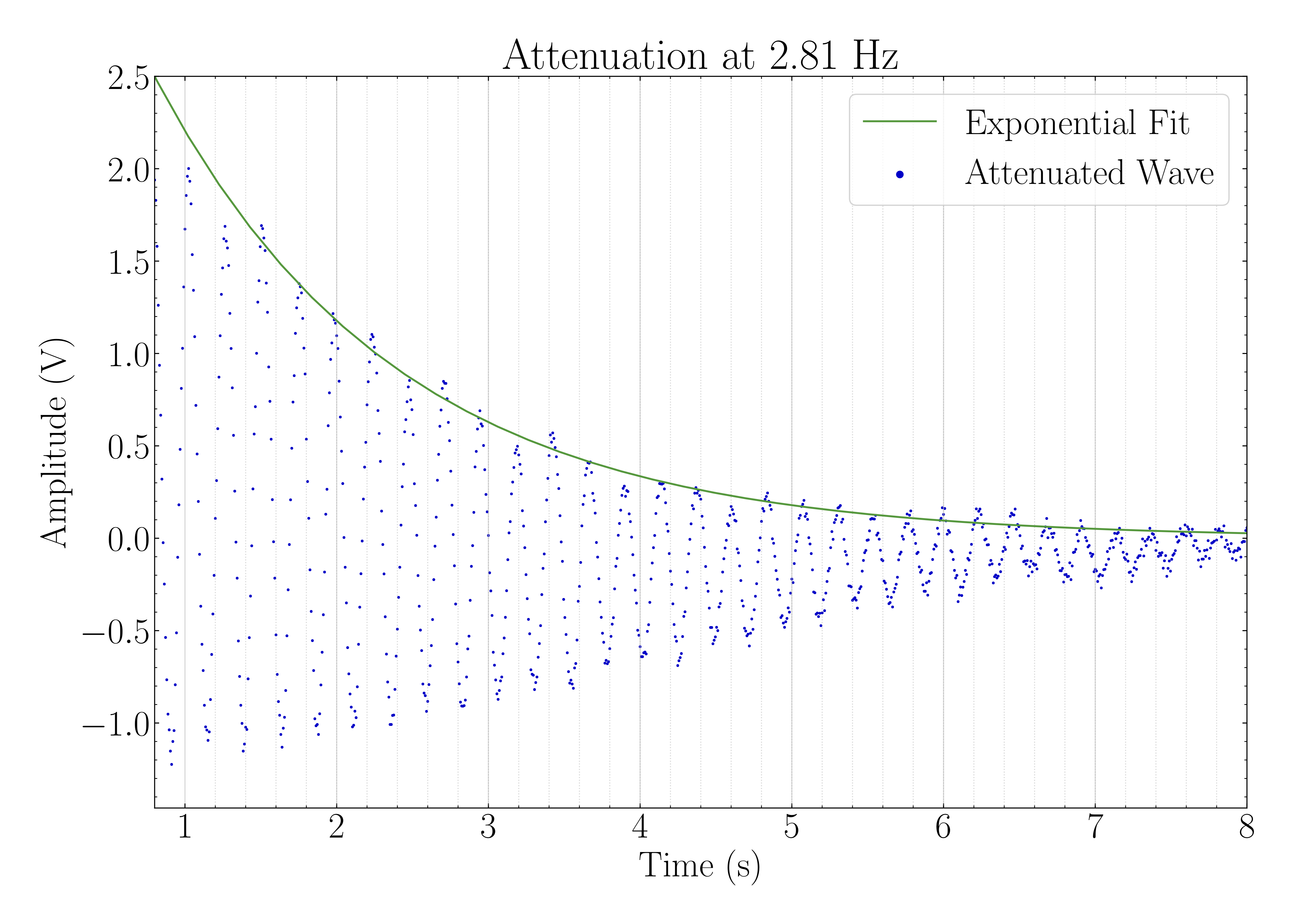Lab 1
Acoustic Normal Modes of Air Filled Cavities of Rectangular and Cylindrical Geometries
In this experiment, we studied the acoustic normal modes of air filled cavities in rectangular and cylindrical rooms. In each of the rooms, a microphone placed at strategic locations of the rooms would measure the acoustic eigenmodes, or normal modes, of the sound outputted by a speaker that swept through frequencies from 500 to 5 . Normal modes of a sound wave is the pattern of motion where all parts of the system move sinusoidally with the same frequency and are in phase. Essentially is when the waves all move together. We performed a Fast Fourier Transform (FFT) to detect what frequencies were detecting with the microphone. Furthermore, we also mapped out the pressure maps of the rooms based on the voltage reading out microphones were receiving at various positions within the rooms. Furthermore, we also showed the the speed of sound is relatively stable as a function of frequency.
I wrote some code that helped efficiently performing the lab. Based on the air temperature, composition of the air, humidity, air pressure, temperature of the room, and the dimensions of the rooms we made theoretical predictions as to what frequencies we expected to measure in our experiment. Calculating for a rectangular room was simple
# lx, ly, lz are the dimensions of the rectangular room
# c is the speed of sound in the rooms
xlist = list()
frequencies = list() # Stores calculated frequencies
for x in range(len(nx)):
for y in range(len(ny)):
for z in range(len(nz)):
f = np.sqrt((x/lx)**2+(y/ly)**2+(z/lz)**2) * (c/2)
frequencies.append([x, y, z, f])
frequencies = np.reshape(data, (len(nx)*len(ny)*len(nz), 4))
The code for calculating eigenmodes for rectangular geometries and cylindrical geometries can be found in my GitHub. The full report can be found here.

Lab 2
The Dispersive Nature of Waves in Shallow water
The dispersion of water pertains to the notion that waves of different wavelengths travel at different phase velocities. The phase velocity of a wave is the rate at which the phase of that waves moves in space. In this experiment we predicted the resonant frequencies, normal modes, of the tank holding our water and used these modes to study the dampening of water waves induced by a speaker at one end of the tank. The full report can be found here.

Lab 3
Characterization of the Luminescence Emitted by Gas Bubbles in Water Driven by a Strong Acoustic Field
Sonoluminescence is characterized by short bursts of light from imploding gas bubbles in a liquid when excited by sound. It is a process of converting sound into light–the bubble is concentrating the energy of the acoustic vibrations by a factor of one trillion. The gas bubble we created was measured to have a temperature of , which is about ! The full report can be found here.

Lab 4
The Investigation of the Properties of Liquid Helium Through an Acoustic Approach
The response of a substance to acoustic waves reflects the underlying phenomena governing a substance, hence clues about the nature of a substance. In this experiment we investigated the three ‘sounds’ of liquid helium and deduce other information about the fluid from them. The three sounds we measured in this experiment are the , , and . The sound can be seen as how sound propagates through the liquid, more specifically how energy is transported by changes in the density of the medium. The sound is a ‘temperature wave’ the normal component og helium carries all the entropy of the fluid-it is hotter than the superfluid component which is at around 2-4K. The normal, hotter, component flows towards hotter regions. The waves can be set up by initially perturbing the system such that there is more superfluid in one region. As a result, the superfluid will flow into the region where there is more normal fluid and vice versa. the ‘counterflow’ is known as the sound. The sound when superfluid helium flows through fine power where normal fluids would not be able to flow. The full report can be found here.
